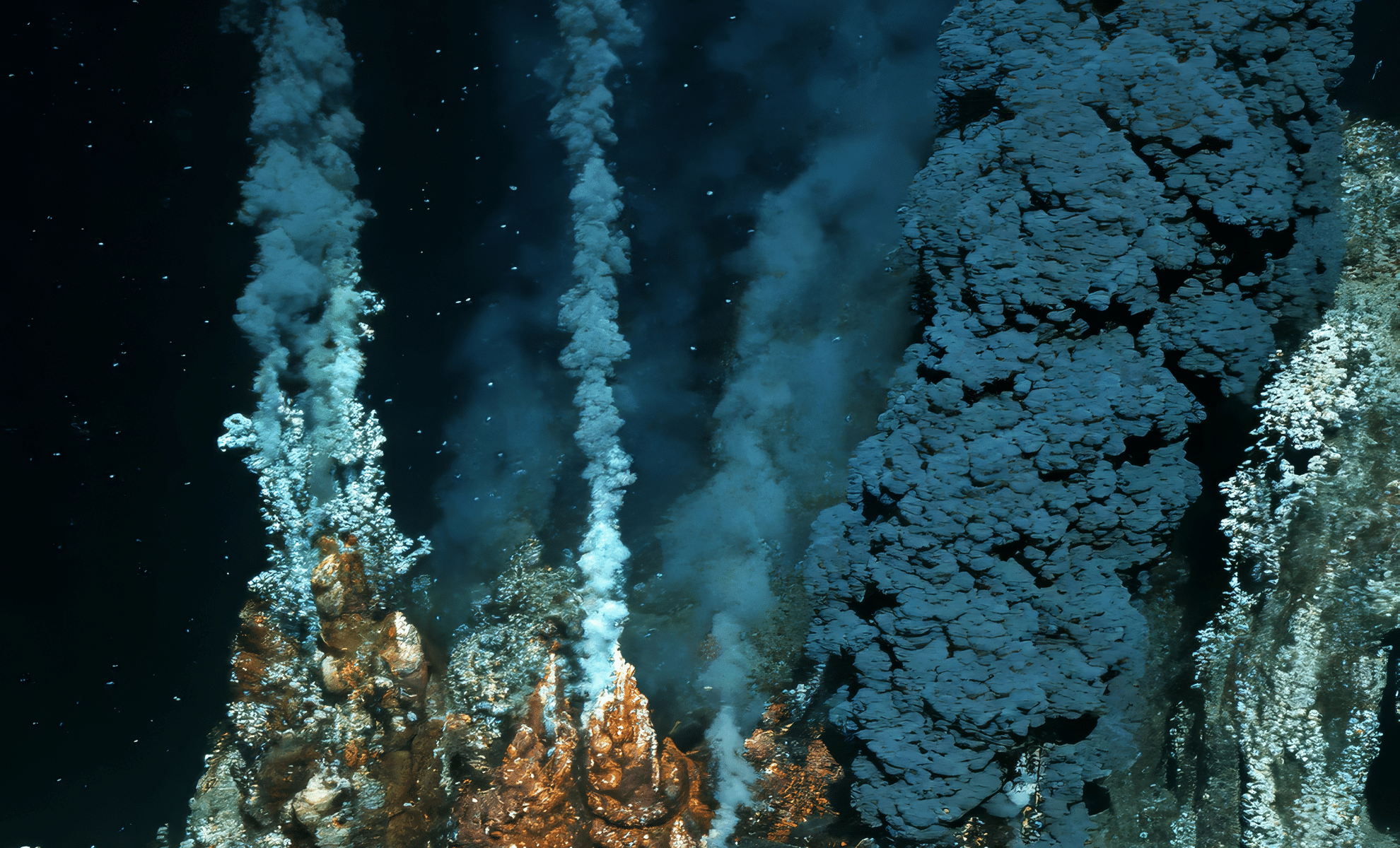Scientists have recreated primitive Earth conditions in the lab to uncover how life’s molecular precursors may have formed.
The experiment mimics hydrothermal vents deep in the ocean, believed to have existed some 4 billion years ago.
It reveals how natural gradients, rather than enzymes, could drive the first chemical reactions of life.
The findings support a compelling theory about the origins of protometabolism—without needing a “primordial soup”.
The Ancient Powerhouses Beneath The Sea
Deep below the ocean’s surface, hydrothermal vents still spew hot, mineral-rich fluids into the cold surrounding water. These systems are more than geological features—they might be biochemical engines that helped give birth to life. In a groundbreaking study published in the Journal of the American Chemical Society (2025), a team of international researchers built controlled lab environments that simulate these vents. They found that under the right conditions, these environments can generate electrochemical gradients strong enough to reduce carbon dioxide (CO₂) into formic acid (CH₂O₂) and later into acetic acid (C₂H₄O₂)—essential steps in one of the oldest biochemical pathways on Earth.
At the heart of this theory is the idea that natural contrasts in pH, temperature, and redox potential—not biological enzymes—may have powered early chemical reactions.
“The hypothesis is that these physicochemical contrasts present in the vicinity of the thermal vents generate a natural voltage, as occurs between the inside and outside of the mitochondria. It’s this voltage that sustains the chemical reactions,” said Thiago Altair Ferreira, lead author and researcher at Japan’s RIKEN institute.
This natural energy source, generated solely by the environment, could have sparked the first flickers of protometabolism—a concept that suggests life’s chemistry began without life itself.
From Hadean Chaos To Molecular Order
During the Hadean eon, Earth was still taking shape—geologically volatile, battered by meteorites, and covered by a primitive ocean. This ocean, cooler and more acidic than today’s seas, came into contact with alkaline fluids erupting from submarine vents. The resulting gradients in temperature and pH formed a chemical battleground ripe for experimentation.
“In the Hadean, there would have been a colder, more acidic ocean, and emanating from hydrothermal vents, a hot, alkaline fluid. That alone would have produced a certain voltage comparable to what we know exists in cellular processes today. Our experiment sought to determine whether this voltage alone could trigger a carbon fixation reaction. And we found that it could,” Ferreira summarizes.
This voltage was generated as hydrogen-rich alkaline fluids mixed with acidic seawater through iron and nickel sulfide walls filled with micropores—a setup echoing the architecture of biological membranes. These conductive mineral barriers allowed electrons to flow and CO₂ to reduce into energy-rich molecules. This process didn’t need enzymes or organic molecules; it relied solely on inorganic chemistry, pushing back the threshold of where life-like processes may begin.
Minerals That Mimic Enzymes
One of the study’s most intriguing aspects is its reliance on iron-sulfur (Fe–S) and iron–nickel–sulfur (Fe–Ni–S) minerals, which closely resemble the metallic cores of modern enzymes. These minerals acted as catalysts in the experiments, lowering the energy barriers required for key chemical reactions.
“Iron–sulfur and iron–nickel–sulfur minerals are very similar to the metal centers we see today in various enzymes. This allows us to consider protometabolism—a metabolism without enzymes—as the trigger for the process,” Ferreira says.
The researchers focused on forming two main compounds: formic acid and acetic acid. These are not just simple molecules—they are early participants in the Wood-Ljungdahl pathway, a carbon fixation route used by some of Earth’s most ancient microbes.
“We focused on two products: formic acid and acetic acid. The first step—converting CO₂ into formic acid and then into acetic acid—is the limiting factor in the process, the most difficult part in terms of energy. We solved it using only minerals,” Ferreira explains.
This suggests that chemical order, not randomness, was present from the start, enabling essential molecular structures to form in a directed and sustained way.
A Spark in the Deep: Electric Currents Drive Chemical Life
A remarkable outcome of the study was the detection of nanoampere-scale electric currents—tiny but consistent charges that powered the reduction of CO₂. The experimental reactors, built to mimic primitive ocean–vent interfaces, required no artificial power. Instead, the same energy gradients present in nature did the work. “This suggests that very small but constant electric currents at the bottom of the primitive sea would be enough to sustain a protometabolism,” Ferreira comments.
These results bridge the gap between geology and biology, showing that life’s early chemistry might not need any complex machinery at all. A few key conditions—right minerals, sharp gradients, and continuous flow—could be enough to sustain a rudimentary metabolism, long before enzymes or DNA existed. The process mirrors what happens in mitochondria today, underscoring just how little the fundamental rules of life have changed over billions of years.
First Appeared on
Source link












